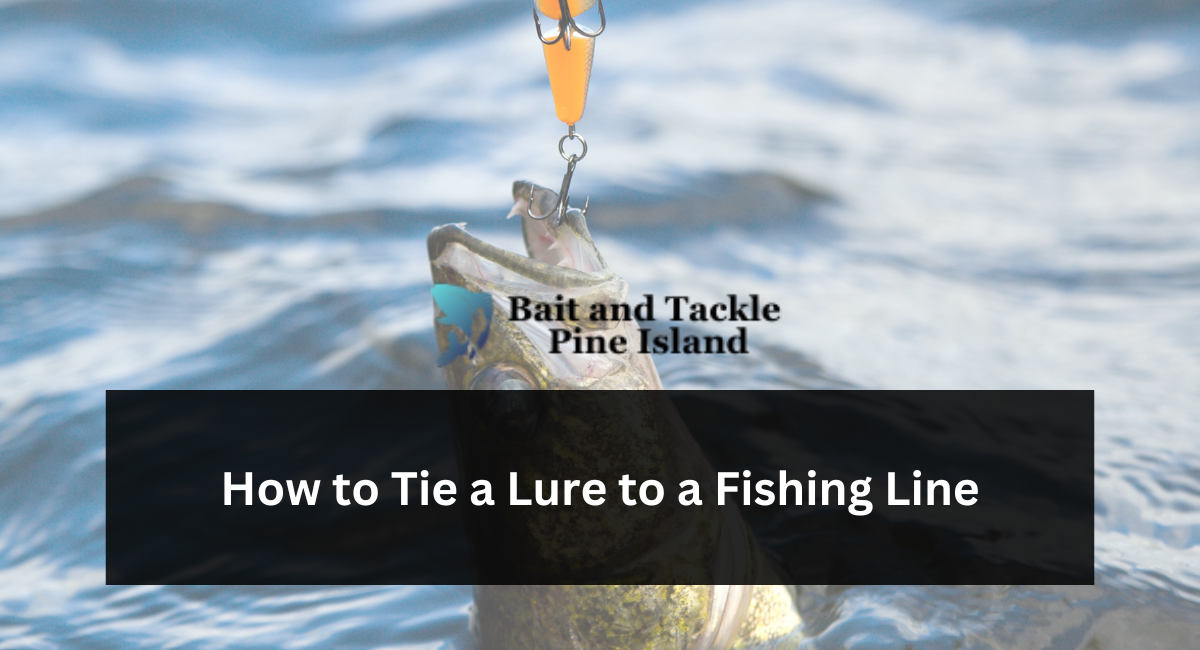Fishing is a wonderful pastime, offering the perfect opportunity to connect with nature and potentially reel in some fantastic catches. When you’re out by the water, one of the essential skills you need to master is tying a lure to your fishing line. Whether you’re a beginner or looking to refresh your knowledge, this step-by-step guide will help you tie your lures securely, so you can cast your line with confidence.
Why Properly Tying a Lure Matters
Before we dive into the step-by-step instructions, let’s understand why tying a lure correctly is crucial for successful fishing:
1. Secure Connection:
A well-tied knot ensures your lure stays firmly attached to your fishing line, preventing it from coming loose during your cast or when battling a fish.
2. Natural Presentation:
The right knot allows your lure to move naturally through the water, mimicking the behavior of prey and making it more enticing to fish.
3. Prevents Break-Offs:
A properly tied knot reduces the risk of your line breaking when you’re reeling in a big catch, ensuring you don’t lose your prized fish.
4. Maximizes Sensitivity:
A secure knot enhances your ability to feel even the slightest nibbles, giving you a better chance of setting the hook.
Now, let’s move on to the step-by-step guide for tying a lure to your fishing line.
Materials You’ll Need:
Before you begin, gather these materials:
- Fishing rod and reel
- Fishing line
- Lure of your choice
- Scissors or line-cutting tool (optional)
Step 1: Choose the Right Knot
There are several knots you can use to attach a lure to your fishing line. Two popular and effective options are the Improved Clinch Knot and the Palomar Knot. In this guide, we’ll focus on the Improved Clinch Knot, a versatile and reliable choice.
Step 2: Thread the Line
a. First, pass the end of your fishing line through the eyelet (the small ring) of your lure. Ensure you have enough line to work with, typically 6 to 8 inches.
b. Hold the lure and the tag end of the line between your thumb and forefinger.
Step 3: Create a Simple Loop
a. With the lure and tag end in one hand, use your free hand to create a simple loop or overhand knot with the tag end of the line.
b. Wrap the tag end around the standing line (the mainline leading to your reel) several times, usually 5 to 7 times, depending on the line’s thickness.
Step 4: Thread Through the Loop
a. Now, take the tag end of your line and pass it through the loop you’ve created, ensuring that it goes through from the top down.
b. You should now have a loop formed by the tag end, with the lure attached to it.
Step 5: Tighten the Knot
a. Hold the lure and the standing line with one hand while gently pulling the tag end with the other hand.
b. As you pull the tag end, the loops will begin to tighten around the standing line. Make sure the coils are snug but not overly tight.
c. Once the knot is almost tightened, moisten it with a bit of water or saliva. This lubrication helps the knot slide smoothly and reduces friction, preventing damage to the line.
d. Continue pulling the tag end until the knot is fully tightened against the lure.
Step 6: Trim the Tag End
a. Use scissors or a line-cutting tool to trim the excess tag end, leaving just a small tag of about 1/4 inch.
b. Be careful not to cut the standing line while trimming the tag end.
Step 7: Inspect the Knot
a. After trimming, inspect the knot to ensure it’s properly tied, snug against the lure, and free from any loose coils or tangles.
b. Give the lure a gentle tug to confirm that the knot is secure and won’t slip.
Step 8: Ready to Fish!
Congratulations! You’ve successfully tied a lure to your fishing line using the Improved Clinch Knot. Your setup is now ready for action. Cast your line into the water, and with a bit of patience and skill, you’ll be well on your way to catching some fish.
Tips for Success:
- Practice Makes Perfect:
If you’re new to knot tying, practice at home before heading out to fish. This will help you gain confidence in your knot-tying skills.
- Use Quality Line:
Invest in a good-quality fishing line that’s appropriate for the type of fish you’re targeting. Quality lines are less likely to break.
- Knot Lubrication:
Always moisten your knot before tightening it. This prevents friction and ensures a secure connection.
- Inspect Knots:
Before each cast, inspect your knots to ensure they are tight and secure. Replace any damaged or weakened knots immediately.
- Learn Other Knots:
While the Improved Clinch Knot is versatile, it’s beneficial to learn other knots as well. Different situations may require different knots for the best results.
Final Thoughts
Tying a lure to your fishing line may seem daunting at first, but with practice, it becomes second nature.
Remember that patience and attention to detail are key to tying a secure knot. Once you’ve mastered this skill, you’ll be well-equipped for a rewarding fishing experience. So, grab your gear, head to your favorite fishing spot, and enjoy the thrill of the catch! Happy fishing!

